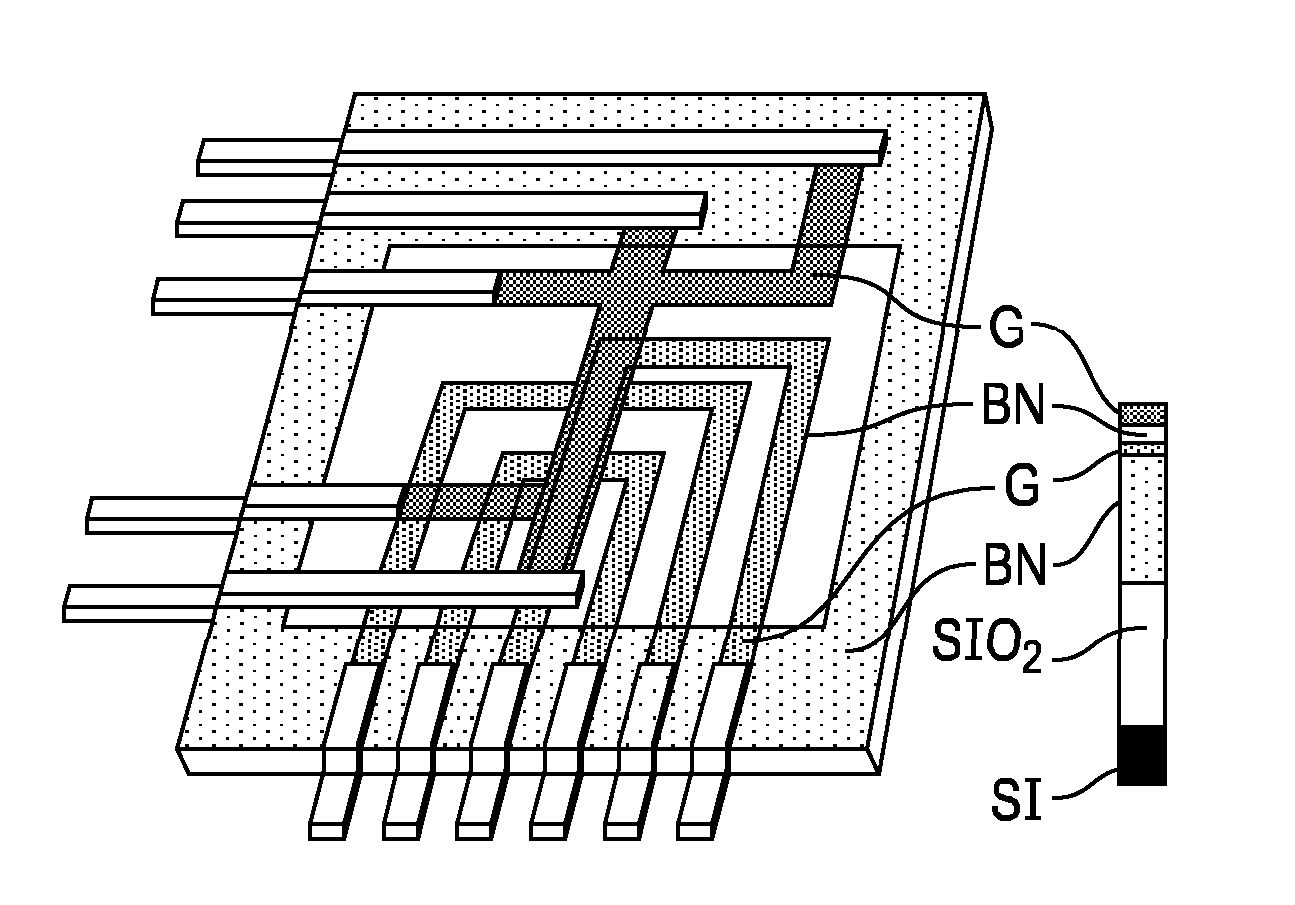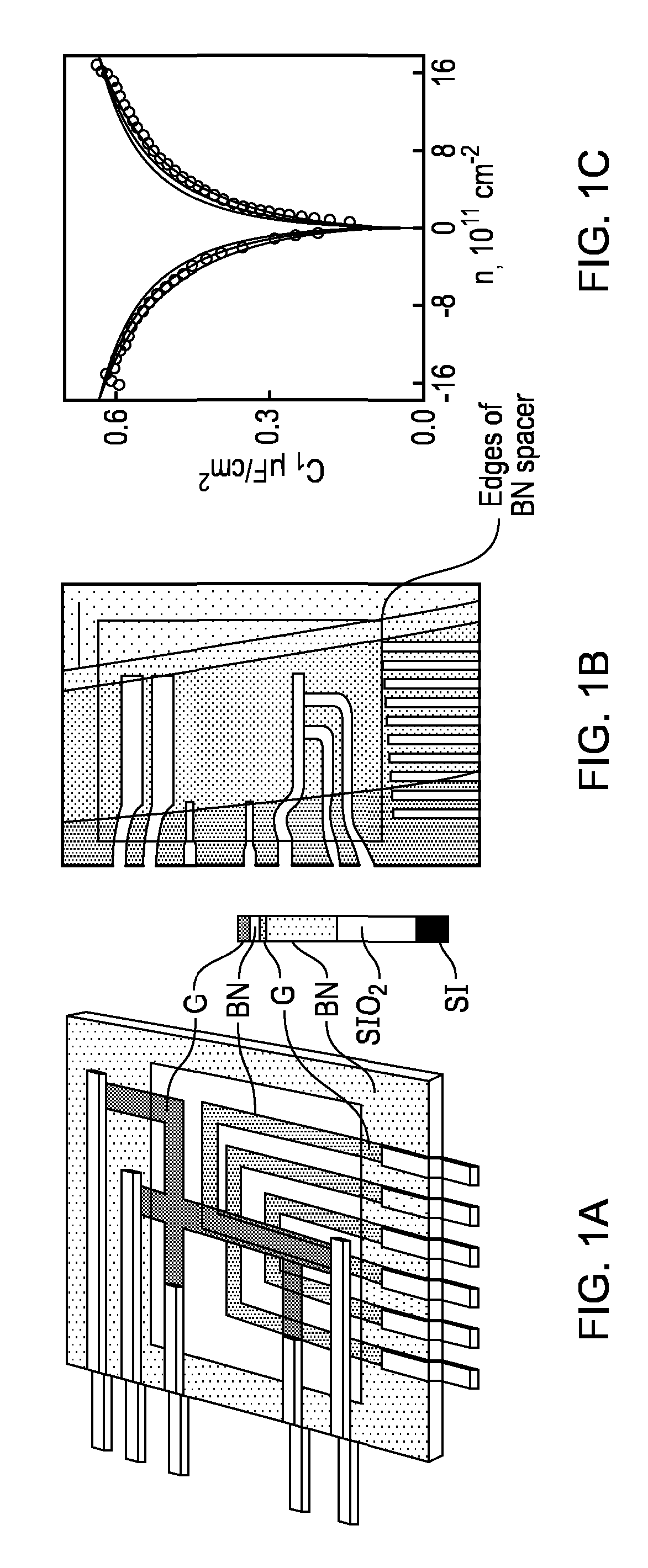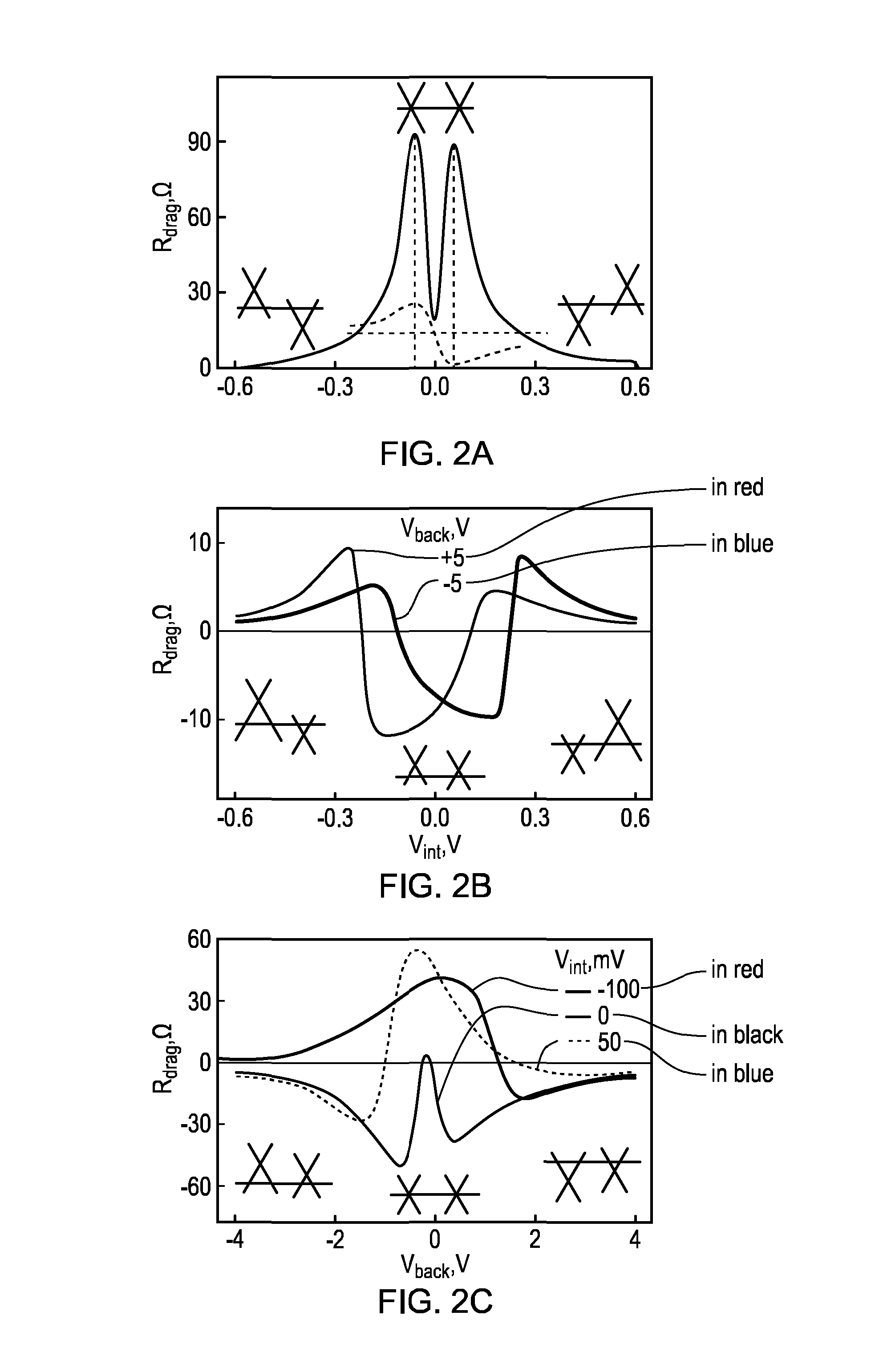Transistor device and materials for making
a technology of transistors and materials, applied in the direction of semiconductor devices, basic electric elements, electrical apparatus, etc., can solve the problems of affecting the performance of graphene-based field effect transistors (fets), and affecting the operation of transistors. achieve the effect of improving the tunnel curren
- Summary
- Abstract
- Description
- Claims
- Application Information
AI Technical Summary
Benefits of technology
Problems solved by technology
Method used
Image
Examples
example 2
Penetration of Electric Field Through the Graphene Electrode
[0170]Consider the geometry shown in FIG. 5A above. The external electric field between the Si and bottom graphene electrodes, which are separated by distance D, is Fg=Vg / D (dielectric constants for both SiO2 and hBN are similar and, for simplicity, we assume them both equal toe). The electric field Fb between GrB and GrT and the induced carrier densities in the graphene plates nT and nB are related by the equations
∈(Fb−Fg)=4πnBe
−∈Fb=4πnTe
A bias voltage Vb between the two graphene electrodes is given by
eVb=eFbd−μ(nT)+μ(nB)
where d is the hBN thickness and μ(n) are the chemical potentials in the corresponding graphene layers. For simplicity, we assume that graphene electrodes are chemically undoped and, therefore, nT=nB=0 in the absence of applied voltages.
[0171]Taking into account the electron-hole symmetry μ(−n)=−μ(n), we obtain the following equation
[0172]4πⅇ2dɛnT+μ(nT)+μ(nT+ɛFg4πⅇ)+eVb=0(S1)
which allows ...
example 3
Modeling of Our Device Operation
[0175]I-V curves for a tunnel junction are generally described by the expression:
I(V)∝∫dEDoSB(E)DoST(E−eV)T(E)[ƒ(E−eV)−f(E)] (S2)
where ƒ(E) is the Fermi distribution function. At low temperatures the difference of the Fermi functions restricts the relevant energy E integral to μ0. The above formula assumes that there is no in-plane momentum conservation, which is most likely to be the case of realistic graphene-hBN interfaces. There are several possible mechanisms for elastic scattering at the interface and, in particular, unavoidable fluctuations of the mass term due to the lattice mismatch. Note that elastic tunneling is forbidden between two 2D systems if in-plane momentum is conserved.
[0176]If the tunneling conductance per channel is much smaller than the conductivity quantum e2 / h (as in our case) the transmission probability T is exponentially small and depends strongly on the energy E of tunneling electrons,
T(E)=A(E)exp[−W(E)] (S3)
where A is ...
example 4
Layered Versus Isotropic Barrier
[0192]In the description above, we have chosen for the sake of brevity to ignore the fact that our tunnel barriers are made from a strongly layered material. This simplification allowed us to refer to the standard tunneling theory. However, the assumption can be justified further by the fact that, for our device parameters, we have found no difference between the I-V characteristics calculated for the layered and isotropic materials and, therefore, we cannot distinguish between the two cases.
[0193]To illustrate the indifference to the layered structure of our tunnel barrier, FIG. 11 shows experimental I-V curves for two devices and compares them with the behavior expected for layered and isotropic cases. No major difference can be seen, except at low bias in FIG. 11A. The exact shape of experimental curves at low bias varies from sample to sample (cf. FIGS. 11A& B) and, hence, we do not discuss the difference.
[0194]FIG. 11 shows the tunneling I-V char...
PUM
| Property | Measurement | Unit |
|---|---|---|
| thickness | aaaaa | aaaaa |
| thickness | aaaaa | aaaaa |
| thickness | aaaaa | aaaaa |
Abstract
Description
Claims
Application Information
 Login to View More
Login to View More - R&D
- Intellectual Property
- Life Sciences
- Materials
- Tech Scout
- Unparalleled Data Quality
- Higher Quality Content
- 60% Fewer Hallucinations
Browse by: Latest US Patents, China's latest patents, Technical Efficacy Thesaurus, Application Domain, Technology Topic, Popular Technical Reports.
© 2025 PatSnap. All rights reserved.Legal|Privacy policy|Modern Slavery Act Transparency Statement|Sitemap|About US| Contact US: help@patsnap.com



